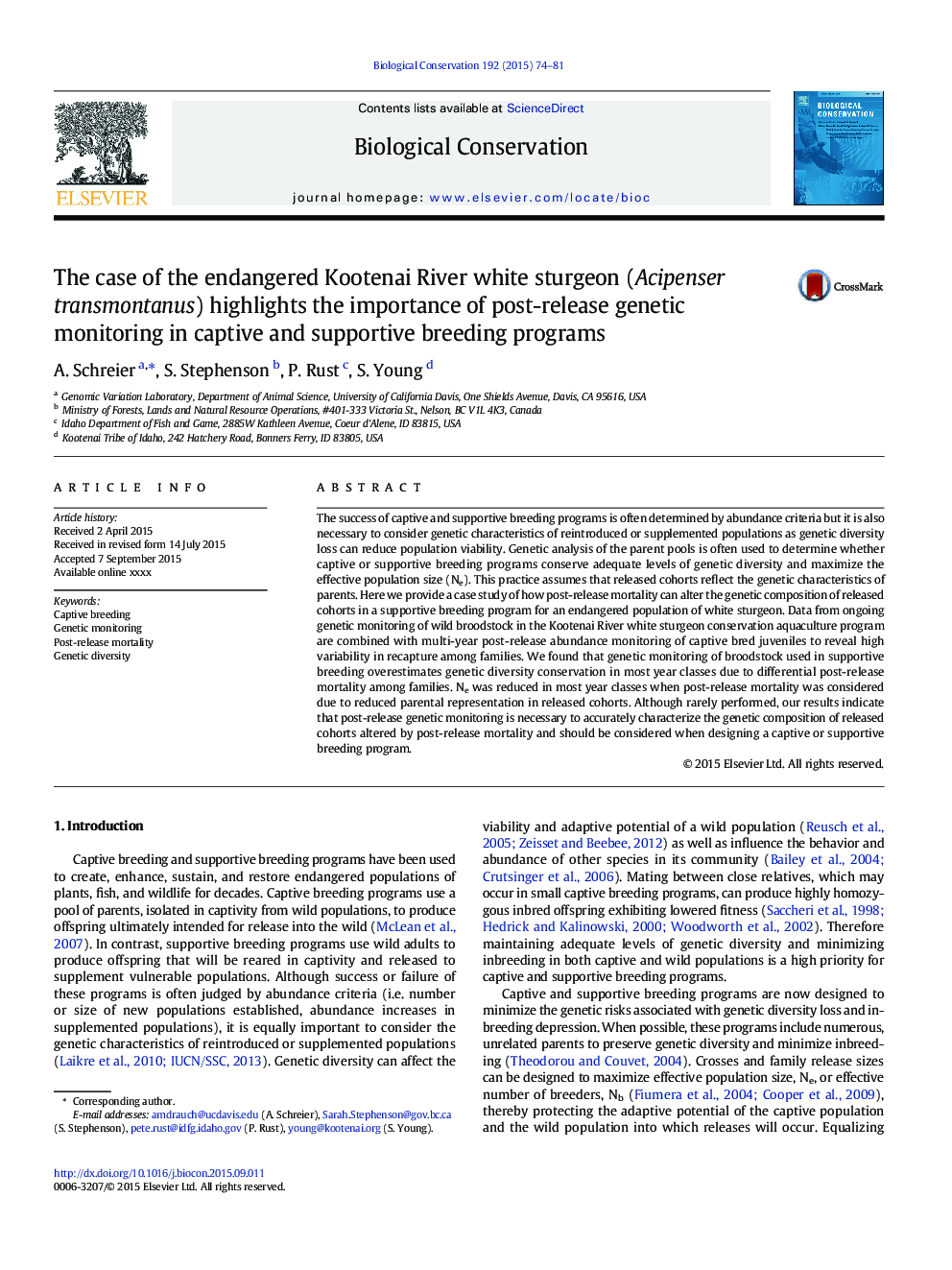| Article ID | Journal | Published Year | Pages | File Type |
|---|---|---|---|---|
| 6298545 | Biological Conservation | 2015 | 8 Pages |
Abstract
The success of captive and supportive breeding programs is often determined by abundance criteria but it is also necessary to consider genetic characteristics of reintroduced or supplemented populations as genetic diversity loss can reduce population viability. Genetic analysis of the parent pools is often used to determine whether captive or supportive breeding programs conserve adequate levels of genetic diversity and maximize the effective population size (Ne). This practice assumes that released cohorts reflect the genetic characteristics of parents. Here we provide a case study of how post-release mortality can alter the genetic composition of released cohorts in a supportive breeding program for an endangered population of white sturgeon. Data from ongoing genetic monitoring of wild broodstock in the Kootenai River white sturgeon conservation aquaculture program are combined with multi-year post-release abundance monitoring of captive bred juveniles to reveal high variability in recapture among families. We found that genetic monitoring of broodstock used in supportive breeding overestimates genetic diversity conservation in most year classes due to differential post-release mortality among families. Ne was reduced in most year classes when post-release mortality was considered due to reduced parental representation in released cohorts. Although rarely performed, our results indicate that post-release genetic monitoring is necessary to accurately characterize the genetic composition of released cohorts altered by post-release mortality and should be considered when designing a captive or supportive breeding program.
Related Topics
Life Sciences
Agricultural and Biological Sciences
Ecology, Evolution, Behavior and Systematics
Authors
A. Schreier, S. Stephenson, P. Rust, S. Young,
